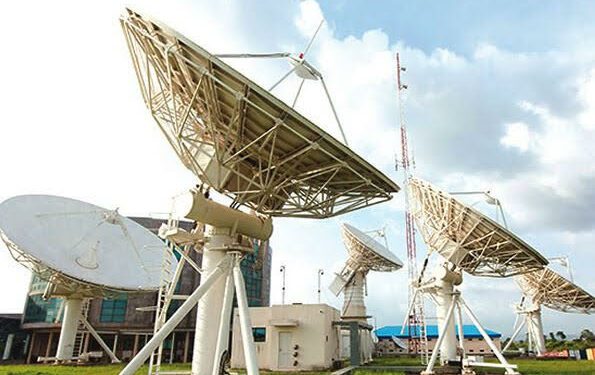Satellite operations are key to telecommunications growth in the country, so Nigeria Communications Satellite Limited, (NIGCOMSAT) should be guided by all means to succeed.
NigComSat is no doubt projecting into the future, looking at its new Key Performance Index (KPI) which is capable of transforming the agency into an opportunity-driven entity and enable it to take more risks in the fast-growing Nigerian ICT sector. NigComSat Limited is a company under the supervision of the Federal Ministry of Communications and Digital Economy and a key player in the Nigeria National Broadband Plan (NNBP 2020-2025) as published by the Federal Ministry of Communications and Digital Economy. Thus, the contributions of NIGCOMSAT Ltd as a national digital economy service infrastructure providing satellite communication solutions to an array of customers, cannot be swept under the carpet.NigComSat-1, a Nigerian satellite ordered and built in China in 2004, was Nigeria’s second satellite and Africa’s first communication satellite. It was launched on 13 May 2007, aboard a Chinese Long March 3B carrier rocket, from the Xichang Satellite Launch Centre in China. The spacecraft was operated by NigComSat and the Nigerian Space Agency, NASRDA. On 11 November 2008, NigComSat-1 failed in orbit after running out of power due to an anomaly in its solar array. It was based on the Chinese DFH-4 satellite bus, and carries a variety of transponders: 4 C band; 14 Ku band; 8 Ka band; and 2 L band. It was designed to provide coverage to many parts of Africa, and the Ka band transponders would also cover Italy.On 10 November 2008 (0900 GMT), the satellite was reportedly switched off for analysis and to avoid a possible collision with other satellites and was put into “emergency mode operation in order to effect mitigation and repairs”. [1] The satellite eventually failed after losing power on 11 November 2008.
On 24 March 2009, the Nigerian Federal Ministry of Science and Technology, NigComSat Ltd. and CGWIC signed a further contract for the in-orbit delivery of the NigComSat-1R satellite. NigComSat-1R was also a DFH-4 satellite.[2]On 19 December 2011, a new Nigerian communications satellite was launched into orbit by China in Xichang. The satellite, according to the then Nigerian President Goodluck Jonathan which was paid for by the insurance policy on NigComSat-1 which failed in 2008, would have a positive impact on national development in various sectors such as communications, internet services, health, agriculture, environmental protection and national security.Under the able leadership of Dr. Abimbola Alale, NIGCOMSAT recently unveiled two new subsidiary companies created within the parastatal to stakeholders and channel partners, at the just-concluded Stakeholders’ Forum, with the theme, ‘NIGCOMSAT Ltd: The Present and The Future.’ Alale said based on the directives of the minister, NigComSat is strategically positioning itself for potential opportunities and risks, hence the creation of operational structures to facilitate its business aspirations. The company has strived to achieve its vision to be the leading satellite communication solutions provider in Nigeria and Africa. Records have it that NigComSat in 2020, obtained approval to form two subsidiary companies (SUBCOs). First, is the Satellite Infrastructure Company (SIC), which should provide satellite upstream services such as Transponder Leasing, and In-orbit-Testing (IOT) services, Carrier Spectrum Management (CSM) services’ etc. And second, the Satellite Broadband and Broadcasting Company (SBBC) set to provide satellite downstream services such as broadband internet services, Broadcasting (DTH) services, amongst others. One must give credence to its partners and stakeholders, such as the Association of Licensed Telecom Operators of Nigeria (ALTON), who have contributed immensely to the successes of the Company’s operations.
However, the huge debt by its debtors, could be crippling. Therefore, it is pertinent to appeal to its debtors to endeavour to pay up within the stipulated time for services rendered. In a related report, the International Telecommunications Union (ITU) in its Broadband Commission report for September noted that satellite technology provides coverage over every human-inhabited square kilometre on the planet. According to the report, at the end of 2020, there were roughly 3,372 active satellites in orbit around the Earth and 1,819 were expressly used for communication purposes. Of these, the satellites in geosynchronous geostationary orbits (GEO) at 35, 786 kilometres above the Earth’s surface are able to cover such large swaths of the planet that in theory only three or so GEOs in a constellation can already provide global network coverage. The report noted that a fast-emerging trend in satellite connectivity has been the deployment not only of next generation high throughput satellites (HTS) and very high throughput satellites (VHTS) into GEO, but also the use of medium Earth orbit (MEO) and low Earth orbit (LEO) altitudes to provide connectivity with lower latency.
ITU observed that these technology advancements dramatically increased the amount of broadband capacity available through satellite transponders, adding that some estimates suggest that satellite connectivity may be well suited for upwards of 697 million people around the world based on their location and other factors.
Olamide Adeniji is a member of the Editorial Team of TheScript Newspaper




